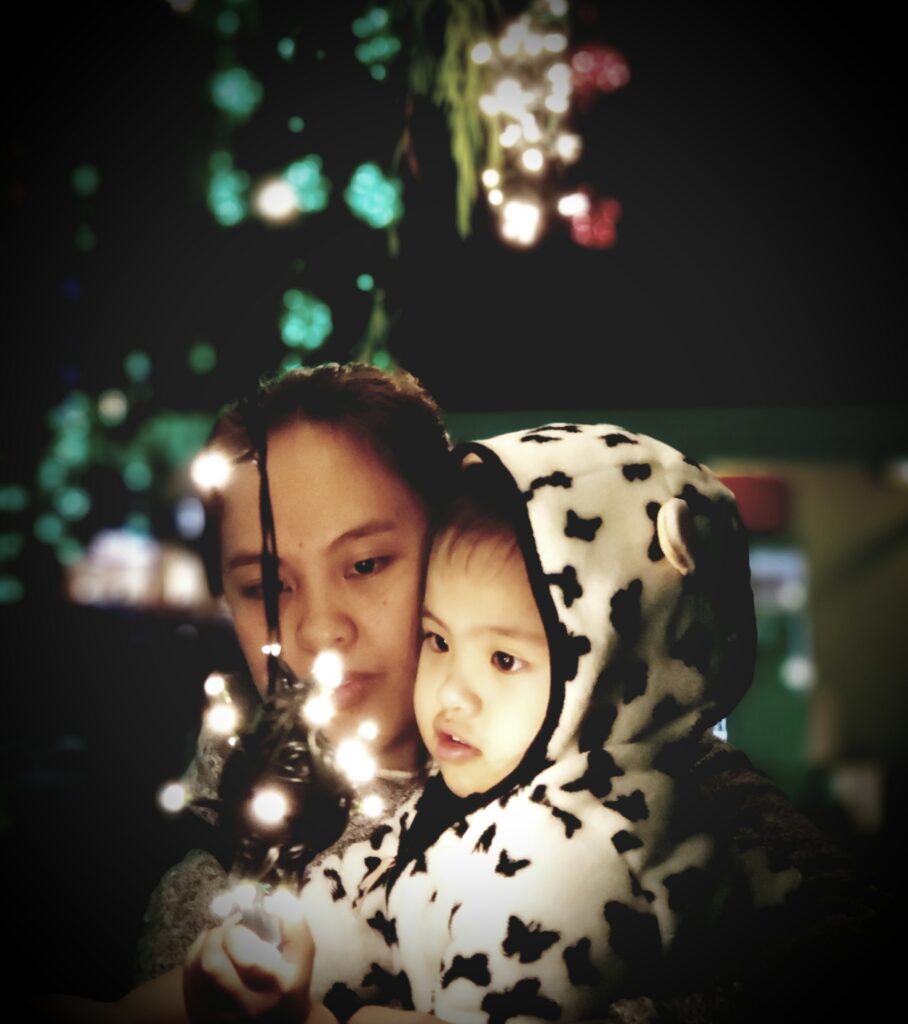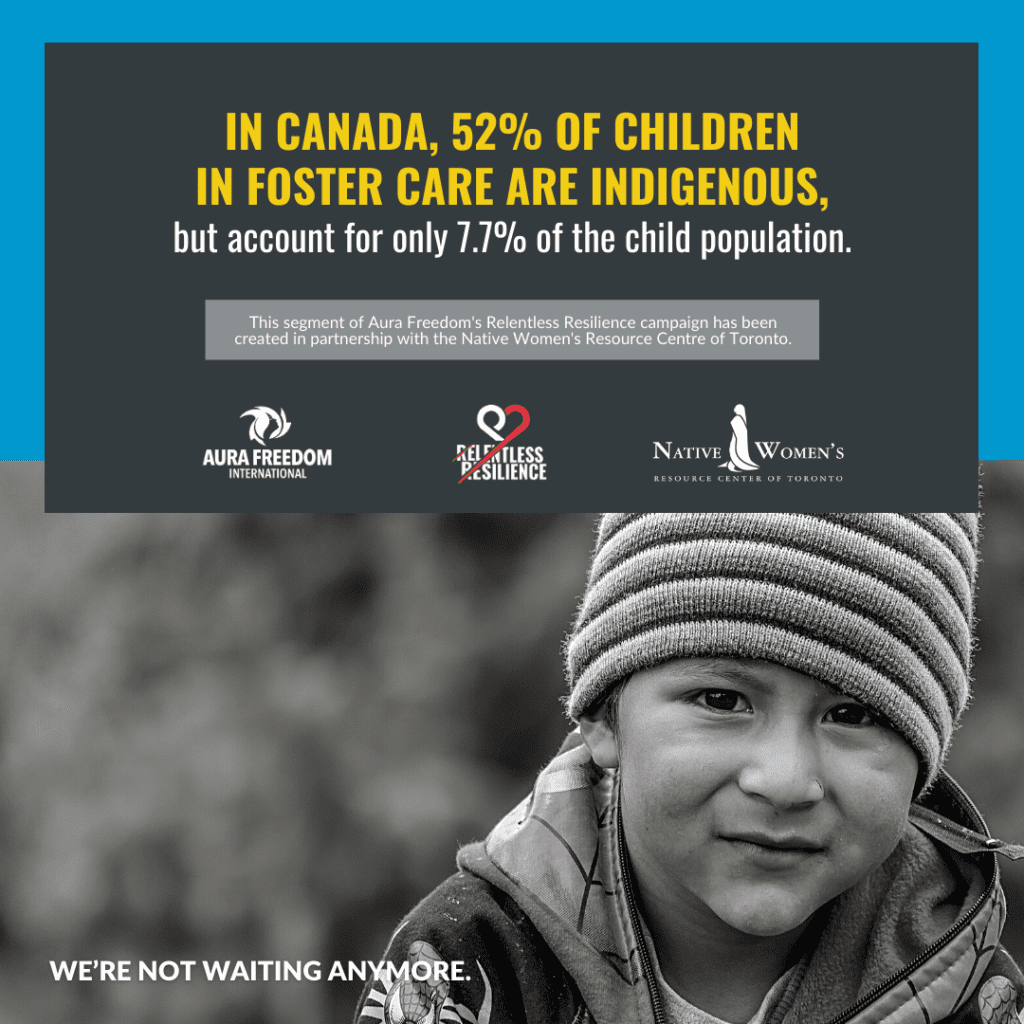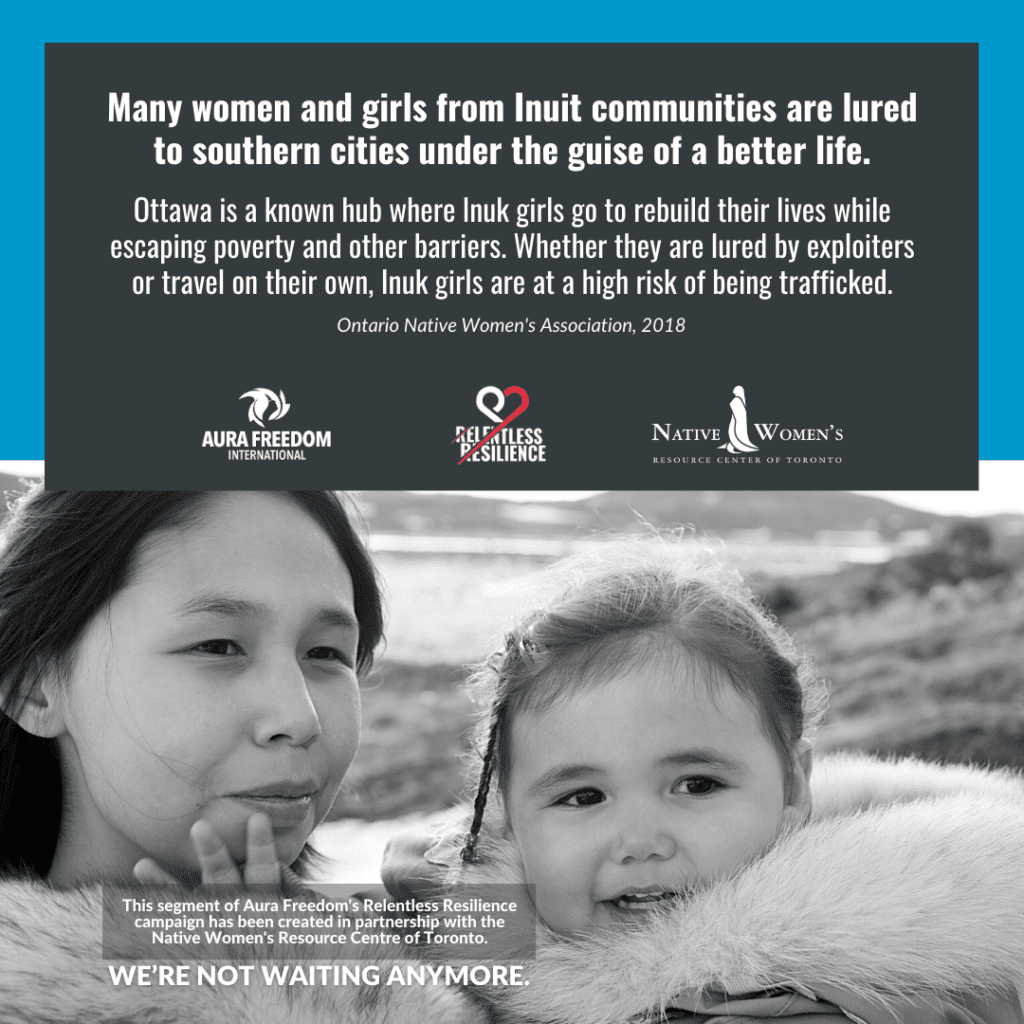THIS INFO HUB IS DIVIDED INTO 3 PARTS. NAVIGATE USING THE INDEX BELOW
Considerations
Aura Freedom's work and this Info Hub focus on human trafficking that involves sexual exploitation, also known as sex trafficking.
We recognize that human trafficking does not only happen in the sex industry, but in domestic labour, the care sector, the service industry, farming industry, fishing industry, and more. Forced/child marriage, forced crime and organ trafficking are other forms.
We often use the term ‘sexual exploitation’ in place of sex trafficking.
Sex trafficking / sexual exploitation are internationally recognized forms of gender-based violence as women and girls are trafficked for sex at higher rates. However, men and boys can also be sexually exploited.
Human trafficking is indeed a crime, but more importantly, it is a human rights abuse.
Although we prefer the term ‘survivor’, you may see the word ‘victim’ on this info hub when referencing police activity or statistics.
It is important to note that Aura Freedom meets survivors where they are, recognizing their diverse backgrounds, stories, and choices. We are survivor-centred, trauma-informed and fuelled by compassion. We refute the patriarchal ‘victim narrative’ that has a limited view of what trafficked persons look like.
Human rights are guaranteed to everyone – regardless of gender, race, ability, religion, class or how someone chooses to make a living – including sex work.
It is important to distinguish between consensual sex work by adults and exploitation. Sex trafficking is not a choice – it is abuse, coercion, manipulation, and internationally recognized as a form of slavery.
Please note that this Human Trafficking Info Hub is not a service directory. For pan-Canadian directories on different anti-trafficking services and supports for survivors, you can visit the Canadian Centre to End Human Trafficking or Find Help/211.

Anyone under the age of 18 cannot legally consent to sex work in Canada.
Definitions
Don’t think “Hollywood”.
Human trafficking rarely involves kidnapping. Instead, it is a slower process of manipulation, deception and coercion. It thrives in situations of unequal power and inequity.
This makes consent central to this issue and an important one to explore when dealing with exploitation or any form of sexual violence.
In 2000, the UN’s Palermo Protocol defined human trafficking as:
“Trafficking in persons” shall mean the recruitment, transportation, transfer, harbouring or receipt of persons, by means of the threat or use of force or other forms of coercion, of abduction, of fraud, of deception, of the abuse of power or of a position of vulnerability or of the giving or receiving of payments or benefits to achieve the consent of a person having control over another person, for the purpose of exploitation. Exploitation shall include, at a minimum, the exploitation of the prostitution of others or other forms of sexual exploitation, forced labour or services, slavery or practices similar to slavery, servitude or the removal of organs.”
Canada ratified the Palermo Protocol in 2002.
The World Health Organization defines sexual exploitation as, “Actual or attempted abuse of a position of vulnerability, power, or trust, for sexual purposes, including, but not limited to, profiting monetarily, socially or politically from the sexual exploitation of another.”
Sexual exploitation occurs when another person (or persons) abuses or exploits a person’s sexuality without their consent – such as forcing a someone into the sex trade, which is also known as sex trafficking.
Aura Freedom views sex trafficking as a form of gender-based violence and the ultimate manifestation of intersecting inequities (gender, race, class, etc.) It is not only a crime, but a human rights abuse that requires a strong, intersectional gender lens and a trauma-informed approach that is survivor-centred. Sex trafficking includes exploitation in sex work, massage parlours, exotic dancing, escort services, pornography, military prostitution, sex tourism, mail-order brides, and more.
Currently, there are two branches of Canadian legislation that deal with human trafficking in Canada:
The Immigration and Refugee Protection Act and
The Criminal Code of Canada
Trafficking, is defined by these organizations as:
- using abduction, fraud, deception, threat of force, or coercion to accrue, transport, receive, or harbour persons into Canada (Immigration and Refugee Protection Act).
- recruiting, transporting, receiving, holding, concealing, harbouring, exercising control, direction, or influence over the movements of a person for the purpose of exploiting them – making them feel that their lives or the lives or safety of others are in danger (Criminal Code of Canada).
Canada’s definitions of human trafficking has been subject to criticism for being inconsistent with international law.
The Canadian Criminal Code definition fails to show how the use of force, fraud, and coercive control are key elements in human trafficking.
The Immigration and Refugee Protection Act does not separate smuggling and human trafficking, nor does it mention exploitation in the legislation. By failing to acknowledge exploitation within its definition, the Immigration and Refugee Protection Act focuses mainly on the issue of migration rather than the actual act of human trafficking. The Canadian government points out that these key elements are not included in definitions as they are already outlined in other sections of the Criminal Code.
Exploitation has always been outlined but never fully defined within Canadian and international law. While academics and other stakeholders are exploring or proposing their own definitions, we would like to highlight the main issue – exploitation is a violation of human rights and is a core element of human trafficking.
By ignoring important elements of exploitation and control, these acts promote an incomplete picture of human trafficking. This can lead to misinformation, inaccurate responses, harm and lack of support for survivors whose experiences are not reflected in the definitions, while also ignoring the root causes of trafficking.
Still to date, there is no official definition of exploitation within the anti-trafficking movement.
By ignoring important elements of exploitation and control, these acts promote an incomplete picture of human trafficking. This can lead to misinformation, inaccurate responses, harm and lack of support for survivors whose experiences are not reflected in the definitions, while also ignoring the root causes of trafficking.
The Way Aura Freedom Addresses Trafficking
Human trafficking, like gender-based violence, is a manifestation of inequity.
It thrives where there is an unequal power balance.
Aura Freedom views human trafficking as a human rights abuse and focuses on addressing the issue of sexual exploitation by combining both a human rights approach and an upstream public health approach in its core activities. This means, we address the root causes.
Our counter-trafficking work aims to advance equity. It stresses the importance of empowering youth to make safe and healthy decisions in their lives and reach out for community support when they need it. We do not engage in ‘rescue industry’ activities. We seek to end human trafficking by dismantling oppressive structures – anything else will not have any long term effect.
There is no quick fix to human trafficking.
We need to zoom out, address root causes, and unpack societal power imbalances and inequities if we are really going to end it. This will take a while.
"Anti-trafficking work that is not addressing inequities of gender, race, socio-economic status and more, simply won't be effective."
Marissa Kokkoros, Founder of Aura Freedom

It's not just about crime.
Human trafficking is indeed a crime, but more importantly, it is a human rights abuse.
If we focus on crime, we will also focus on the many ‘crimes’ that survivors are forced to commit or coerced into committing by their traffickers (carrying guns, carrying drugs, credit card fraud, etc.). Aura Freedom practices the Non-Punishment Principle when supporting human trafficking survivors.
The Non-Punishment Principle was established due to the rising recognition that trafficked persons were being punished for their involvement in unlawful activities committed in the context of their status as trafficking victims. The 2002 Recommended Principles and Guidelines on Human Rights and Human Trafficking of the United Nations Office of the High Commissioner for Human Rights recognized this issue and outlined that such victims must be provided with protection over punishment for their unlawful acts in direct consequence of their trafficking.
Sex Trafficking Trends
Trafficking trends are patterns that emerge when we examine human trafficking data. It indicates who is most at risk of being trafficked and how they are likely to be trafficked. Having this knowledge empowers us to prevent human trafficking in our lives and in the lives of others. Below are some recent sex trafficking trends that have been documented, but please note that this is not a complete list.
- Based on Aura Freedom’s research and experience and also on current data, both traffickers and victims are getting younger. We have seen youth in high schools working with older traffickers and exploiting their own classmates.
- Victims between the ages of 12-17 years old are at particular risk of being lured and groomed.
- Victims over 18 are also trafficked and the 18-25 age bracket is also at risk.
- Sex buyers are not only older men, but can also be fellow students who arrange transactions during school time.
- Girls and women make up the majority of victims of sexual exploitation, due to gender inequality and patriarchal views of women and girls. Indigenous and racialized girls are targeted at higher rates due to the intersecting inequities of gender and race. Read more on the root causes of human trafficking in Part 2 of this Info Hub.
- Young men and boys are also trafficked in the sex trade, although at much lower numbers.
- Gender diverse and trans youth are also at risk of sexual exploitation due to a lack of community and family support and an increase in homelessness.
- Most traffickers are men, but we also see women and girls working alongside them, who are often being exploited, too.
- Still to date, the most common sex trafficking scenario is being exploited by a man you thought was your boyfriend or intimate partner. This is exactly why education on consent and healthy relationships is so vital.
- “Sugar Daddy” relationships can lead to sexual exploitation or human trafficking due to the substantial power imbalance. “Travel buddies” are also high-risk relationships.
- Youth can be exploited by peers who are posing as close friends or best friends. These “friends” are often being exploited by the trafficker to recruit new people.
- Family members can also traffic and exploit other family members for profit.
- Airbnb is often used by traffickers, as private residences are more hidden than hotels. Hotels are still commonly used by traffickers.
- Uber is often used by traffickers to move their victims to appointments as they can control and see their location in real time.
- Traffickers look for potential victims at malls, bars, youth group homes, homeless shelters, bus stations, amusement parks, schools, and more.
- “Modelling studios” are often fronts that human traffickers use to lure and groom victims.
- We are now seeing students being exploited in schools during school hours.
- Youth can be targeted and lured at hotel parties, all-age parties and ’paid to party’ situations.
- The internet is the most popular way to find, lure, and recruit youth victims. Social media, dating sites, gaming apps, and even “travel buddy” sites, are used as recruiting tools. Internet safety is key to preventing exploitation.
- COVID-19 has exacerbated exploitation as people, especially youth, are spending much more time online.
COVID-19 has resulted in youth spending more time online and being more isolated, meaning increased vulnerability to being groomed and recruited online.
Statistics
Human trafficking is highly underreported due to its hidden nature.
Many of the survivors Aura Freedom has worked with have never and will never report their trafficker to police for fear of retribution from their traffickers or due to mistrust of police. Many of our partners have indicated similar patterns.
Therefore, any human trafficking statistics will never bring a complete picture, but only highlight police activity.
Tip of the iceberg.

Indigenous identity is a risk factor for the victimization of Indigenous women/girls, even when various risk factors are controlled.
(Department of Justice, 2017)

The majority of victims in human trafficking cases in Canada are Canadian. (Stats Can)
According to Statistics Canada (2018), members of vulnerable or marginalized groups are at greater risk of victimization in Canada.
Please note that although human trafficking does occur within 2SLGBTQQIA+ groups, it is under research and under-reported.
Indigenous women and girls face the highest risk of trafficking in Canada.
Ontario Native
Women's Association
Aura Freedom & Native Women's Resource Centre of Toronto
Aura Freedom's own research with youth in Ontario found that:

Explore our Workshops and Resources
Aura Freedom has created various training workshops and other resources for youth, educators and service providers on preventing and responding to sexual exploitation:
Aura Freedom's Human Trafficking Peer Prevention Project
Aura Freedom's Trafficking Prevention Workshops for Service Providers
Free digital resources for teachers to discuss sex trafficking with youth
Please note that this Human Trafficking Info Hub is not a service directory. For pan-Canadian directories on different anti-trafficking services and supports for survivors, you can visit the Canadian Centre to End Human Trafficking or Find Help/211.
Suggested citation for Aura Freedom’s Human Trafficking Info Hub: Aura Freedom. (2021, November 25). Human Trafficking Info Hub. Retrieved from: https://aurafreedom.org/
This is a living website and will be expanded and updated as funding permits, and as we learn more about human trafficking, as well as curate and vet additional resources from our partners.






